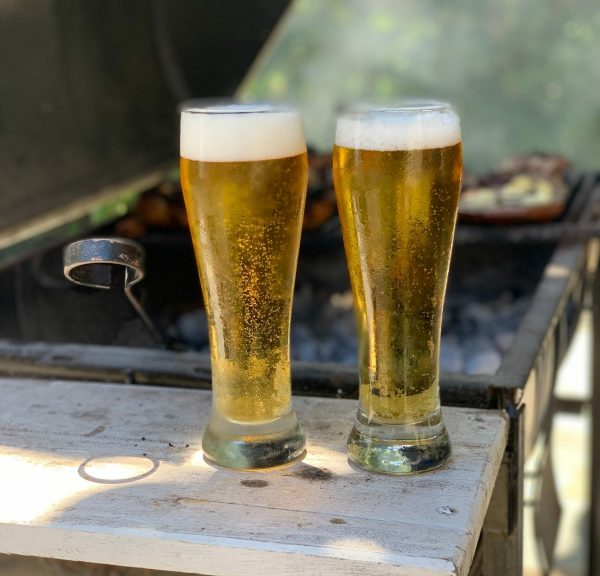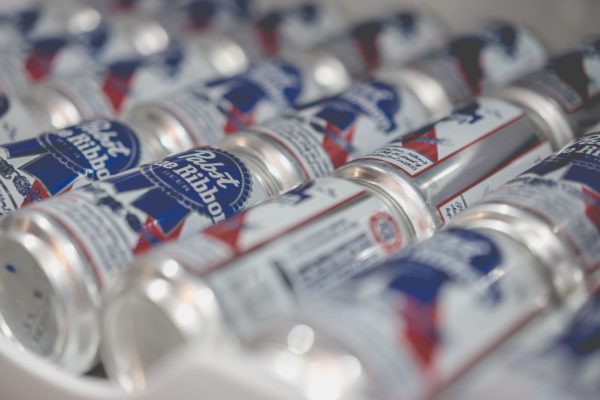In this grand world of beer, there are endless styles out there. Lagers are considered the entry point into beer, marked by their qualities of being easy to drink and smooth. They are known to be crisp in flavor but mild in texture.
Lagers are the most commercially available style of beer in the country. They can vary in color from very pale to dark amber. When you go to the store and buy a six-pack, it’s most likely a lager. In fact, most beer in the world is lager.
Within this category of beer exists another style: pilsners. Pilsners are one of the most versatile drinks on the market and are considered a pale lager. They’re refreshing, they’re thirst-quenching, and they’re darn good.
If you’ve had your fair share of beers in your life, then you’ve probably had a pilsner before. Some common brands that produce pilsner include Stella Artois, Modelo Especial, and Beck’s.
Today, we’re going to be looking at the different styles of pilsners among different regions in the world. Specifically, we’re going to be diving into American, German, and Czech pilsners.
At the start of the 19th century, beer quality in Europe was largely poor, and purity from batch to batch was inconsistent. This was especially apparent in the city of Pilsen, Czech Republic.

In Pilsen, beer quality in the market had gotten so bad that citizens protested and poured 36 kegs of city beer into the streets in front of city hall. The people of Pilsen were serious about their beer. And they weren’t going to stand for a poor product.
They decided to start brewing beer from scratch. The citizens of Pilsner immediately began building a state-of-the-art brewery and infusing it with updated technology that was lacking before.
They also hired a new Bavarian brewer named Josef Groll. He grew up in Vilshofen in lower Bavaria, where his father owned a brewery and experimented with different fermentation recipes for years.
In 1839, the city hired an architect named Martin Stelzer. Both Groll and Stelzer were Bavarians, who were viewed as masters of beer brewing at the time.
Stelzer was only 24 at the time he was hired, and he had never built a brewery. However, he had spent ample time visiting breweries throughout Bavaria and Europe, studying the latest technology.
The new brewery in Pilsen would become Stelzer’s claim to fame. He built the brewery on the Radbuza River because it was filled with sandstone rock, making it easy to excavate deep tunnels for lagering and aquifers to provide soft water.
The brewery was named Bürgerbrauerei, which translates to citizens’ brewery or municipal brewery in German. It was here that the first batch of pilsner was made. Little did these people in Bohemia know that they were about to completely revolutionize the beer industry.
How Pilsner Spread
So how did this Czech style of beer make its way around the globe? After it was first produced, it became an instant classic in its surrounding area. However, it began to spread quickly to adjoining areas that had similar physical features.
Many of these areas provided the same water supply as Pilsen, making it easy to produce pilsner. This style of beer became known as the Bohemian Pilsner, now known as the Czech Pilsner.
Initially, it started to spread across the border in Bavaria, which had similar water supplies as Pilsner. However, the growth of railroads across Europe and the advent of refrigeration would soon catapult this drink into the mainstream market.
First, it hit northern Germany, where bitter imitations of the drink were made due to the region’s high sulfate level in its water. Then, it would hit the New World, where it would really take off, especially in the United States of America.
Pilsner Flavor Profiles
The color of beer comes from the types of grains used to produce it. Pilsner is made from unroasted barley, which gives it its light color. In some pilsners, corn or rice may be added to increase the complexity of flavor.
The depth of color comes from the different types of grain used in the beers. Pilsner uses unroasted barley and may even add corn or rice to lighten the color even more.
Different styles of the drink may exhibit different colors. For instance, American pilsners are known for their yellowish to gold appearance and earthy, bold flavors.
The taste of your pilsner may also depend on which grains are used. Czech-style pilsners are a slightly pale yellow with a low-to-medium hop presence. They are slightly sweet, toasty, and low in carbonation, which provides a silkier mouthfeel. You’ll likely notice flavor notes of bread and biscuit.
American pilsners, in contrast, are lighter in body and color than Czech pilsners. They’re also a bit drier and crisper. Its bitter aftertaste lasts for several seconds after tasting it.
And for German-style pilsners, expect some malty sweetness to coat your tastebuds. Compared to the Bohemian-style Pilsner, the color and body of the beer is lighter and have lower perceived hop bitterness. They also tend to have a more intense aroma of hops.
The Different Styles of Pilsner
Generally, pilsners are ideal for hot weather—they’re often lighter than pale ales and can be truly refreshing on a hot day.
The characteristics of each ingredient in pilsner are very noticeable. The malt, the hops, and the bottom-fermenting yeast should all be distinct. There are no steadfast rules in how pilsners from different regions are produced. However, some trends do exist.
Czech pilsners are usually made with the traditional pilsner recipe, including Pilsner malt, Saaz hops, Hallertau noble hops, and a bottom-fermenting Pilsner yeast.
Meanwhile, American pilsners are typically made with corn and rice, which adds to the graininess of the drink.
German pilsners are made with German noble hops and lager yeast, which result in a thicker, fuller finished product.
How pilsners are made
The process of creating a pilsner is complex and tedious. It starts with milling grains and dough, targeting a mash of about one and a half quarts of water to one pound of grain and a temperature of 68 degrees Celsius.
This mash is kept at this temperature until the enzymatic conversion is complete. Then, the mash is thrown into boiling water and stirred. During this process, the temperature of the mash rises.
Once the mash is boiled, it undergoes a process known as a multistage decoction, in which the blend’s pH levels are balanced. Hops are then added to the mixture before it’s fermented.
To go into detail about the actual process of making beer would take hours of meticulous reading, and unless you’re planning to make beer yourself, you likely don’t need all that information. Let’s just be grateful that there are so many wonderful producers out there who can take care of this work for us to kick back with a cold one.
The takeaway
Pilsners are one of the most storied beers in history. This bold, refreshing drink has been enjoyed for centuries, and for a good reason. There are few beers as balanced and flavorful as pilsners.
Whether you’re attending a party with friends or are just looking to unwind on a Sunday and watch some sports, pilsners are a solid choice. In terms of taste, reputation, and price, there truly is no better option. Once you start sipping on pilsners, you’ll never want to go back.
Check out the North Coast Brewing Scrimshaw Pilsner if you want to try a high-quality pilsner from a trusted brand. The North Coast Pilsner carries a crisp, subtle malt taste with a refined smoothness. At just 4.40% ABV, it is easy to drink and light on the palate.




